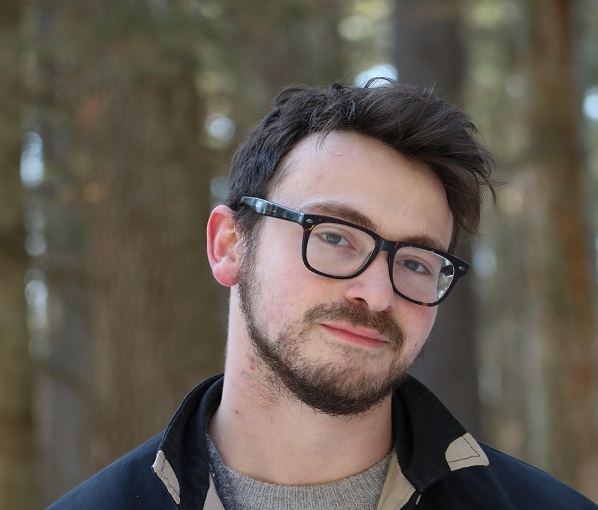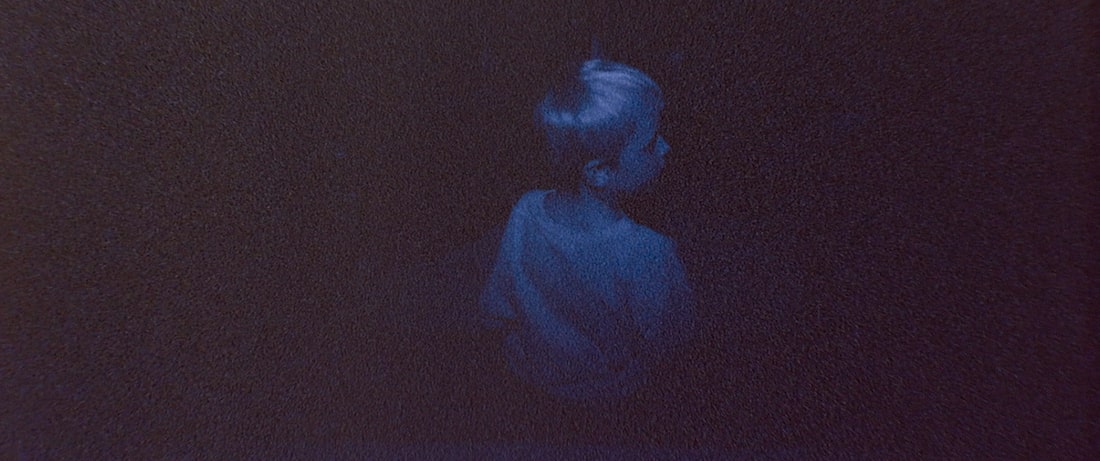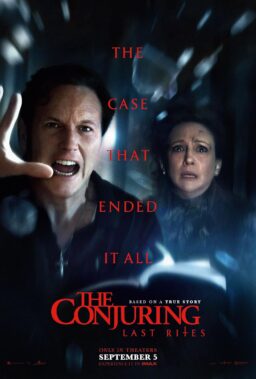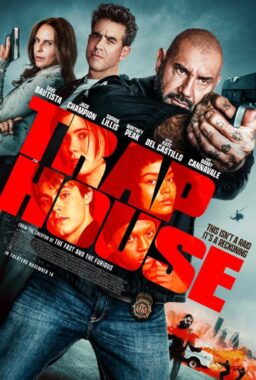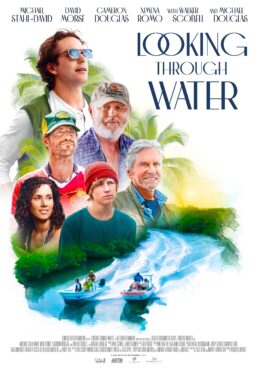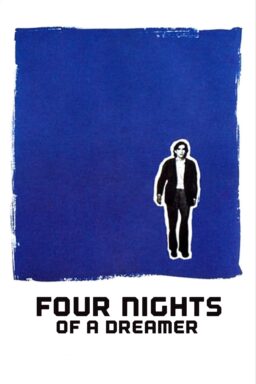With “Skinamarink,” his feature debut, Kyle Edward Ball taps into the primal childhood fear of waking up alone at night, unable to see through the dark and yet terribly aware of something hiding there, watching.
A work of uncannily warped atmosphere, the buzzy horror breakout (in theaters Friday, via IFC Midnight and Shudder) follows two children—Kevin (Lucas Paul) and Kaylee (Dali Rose Tetreault)—who awaken to discover their parents have vanished, along with all the windows and doors in their family home. Moving downstairs to the living room, where the glow of old cartoons emanates from a crackling TV set, they soon sense a presence in the house, calling to them in a childlike whisper. Once-familiar walls and ceilings of their suburban home start to shift, leaving the children disoriented in time and space as they’re drawn into a liminal realm of writhing shadows and textured silence.
Such unsettling sensations are something of a specialty for the Canadian writer/director/editor, who got his start with a YouTube channel dedicated to filming people’s nightmares. Soliciting submissions from viewers, Ball began noticing patterns in the experiences they shared. “People kept commenting on my videos with the exact same dream that they had: ‘I’m between the ages of six and 10, I’m at my house, my parents are either dead or missing, and there’s a monster,’” Ball says. “Around that age is when we’re first having to deal with the world without our parents’ help, in a very powerful way. That’s probably why the dream kept coming up in people … It’s a common, intrinsic part of humanity. Everyone, I think, has versions of this dream.”
Ball first recreated it as “Heck,” a 30-minute proof-of-concept short, before expanding to feature length. Taking its gibberish title from a turn-of-the-century children’s song (which is not heard in the film), “Skinamarink” cost only $15,000 to make, with Ball filming inside his childhood home in Edmonton, Alberta, where his parents still live. Most of the film’s budget materialized through crowdfunding; Ball also borrowed equipment from the Film and Video Arts Society of Alberta.
Shooting for seven days with a small crew, including assistant director Joshua Bookhalter—who died during post-production, and to whom the film is dedicated—Ball found that micro-budget limitations fueled his creative vision, necessitating all manner of trick photography and unconventional angles to mimic a child’s-eye view. “Skinamarink” premiered to strong word-of-mouth at the Fantasia International Film Festival, and other festival slots followed. A technical issue with one at-home viewing platform, however, allowed the film to be pirated; as this illegal copy circulated online, “Skinamarink” went viral on TikTok, with users declaring it to be the scariest film they’ve ever seen, and Reddit, which exploded with all manner of fan theories.
Thankfully, official distribution soon followed, with IFC Midnight and Shudder teaming up for a nationwide theatrical release and subsequent streaming debut. Ahead of “Skinamarink” hitting theaters, Ball discussed his lo-fi approach to horror filmmaking and the Internet’s role in crafting his experiential-nightmare debut.

You’ve referred to “Skinamarink” as an “extremely personal” film, which makes sense given that you shot at your childhood home. How did your experiences growing up there, especially your memories of being alone at night, inform your approach to the film’s interior architecture?
Through doing my YouTube series, I developed a technique of filming by implication, instead of showing. So, instead of showing actors, I was doing point-of-view shots or filming different parts of the room while we had audio off-screen. And, after a while, I thought, “Maybe I could do a feature like this…”
I set rules in place that I wasn’t allowed to break. We never see someone’s face. We avoid showing people on screen for too long. Whatever dialogue is delivered is always delivered off-screen. We never go outside. We never leave the house. We’re always in the house. Even if, at the beginning, you see windows and doors in the house, the blinds are always shut, so we never get a view of the outside world. There’s also no music in the movie. I set these rules in place before I even got the script going, just so that I would have a [foundation] to build on. Once I started writing, because I had these rules in place, I actually found it freeing to be working within a set framework.
I knew the house, obviously, so well. Going into it, I thought, “I know the house. I don’t have to work at trying to make it personal, because that’s already built in.” I didn’t need to consciously think about what parts of the house scare me. It just flowed, and I found more and more that I didn’t have to do that work, because I set the architecture of it from the beginning to work in my favor.
My mom had preserved a bunch of childhood toys that we were going to use as props for the movie. We looked through all these toys, which were intrinsically personal. Looking through them, there was a teddy bear that felt very personal to me and my sister; it was Ogopogo, a sea monster in British Columbia that’s Canada’s version of the Loch Ness Monster. Ogopogo was so personal to me, and that made its way into the movie. Kaylee’s pink elephant blanket, featured heavily, was my sister’s blanket in real life.
There’s other weird stuff, too. When I was little, my mom got a tape, presumably in a bargain bin somewhere, of public-domain cartoons. I had previously utilized public domain videos and audio in the YouTube channel. It has a certain uncanny feeling; as audio and video from the 1930s and ’40s, a lot of it is intrinsically sentimental but creepy. [“Skinamarink” connected me] back to that tape of old cartoons that my sister and I used to watch all the time: “What were the cartoons from that? Let’s see if I can find them. Are these actually in the public domain? Oh, they are. Perfect! Let’s work these into the movie.” On that tape was this specific cartoon called “Somewhere in Dreamland” by Max Fleischer, about a little boy and a little girl in a house who have a dream. The visual motif of that lent itself so well [to “Skinamarink”] and features prominently, too.
I’ve always felt the eeriness of public-domain cartoons owes something to the fact that they’re culturally coded as sentimental, but impersonally so. It’s not your hazy childhood memory, but it evokes hazy memories of childhood.
That’s in part why I’ve gravitated toward the lo-fi aspect of movies. Since I was a little kid, I’ve wondered why they don’t make old movies anymore; there’s an obvious reason for that, but I always felt that movies from the ’70s make me feel differently than movies today do. Movies and cartoons from the ’40s, media of different ages, spark something in me, and in other people, that you can’t quite put your finger on. Also, good horror movies that are creepy, but not necessarily scary, only get creepier with age. When it came out, “The Shining” didn’t necessarily get the response it gets today, and that’s because it’s not scary. It’s creepy, and creepy only gets creepier with age. Scary fades. Creepy is forever. Creepy, you can’t wash away.
In a recent interview, you discussed Ti West’s “The House of the Devil,” an homage to ’70s and ’80s horror, and pointed out it looks stylistically similar to those films but sounds too clean.
Yeah. And, by the way, I love Ti West’s “The House of the Devil,” but, let me tell you, I remember watching it. And if you told me this is a movie from the ’70s, I would have believed you but for the fact that I’m a filmmaker and maybe notice sound more than others. I remember thinking, “The sound is so clean. There’s no way that sound from the ’70s would have been that pristine.”

Your soundtrack is entirely post-synch ADR, and its effect is unsettling, with this layering of hisses and hums that distort whatever whispered dialogue is audible. I watched the film with headphones on, late at night, and found myself strangely adrift.
I didn’t just want “Skinamarink” to look like an old movie. I wanted it to feel and sound like one. I wanted to go really [hard] with that. I didn’t just want to make the dialogue sound like it was recorded on an old microphone. I wanted the audio to feel like an old, scratched-up re-taping of a film that wasn’t preserved from the ’70s—lots of hiss, lots of hum. I had so much fun playing with that because I discovered in different scenes and different cuts I could use the hiss and hum to my advantage and tell a story even with that.
There’s one shot in the movie where there is dead audio, no hiss or hum. The whole movie, you have varying degrees of hiss and hum, and then there’s a shot at the end where it’s just gone; that takes you out of things and makes you think something’s going to happen. “What’s going on?” It makes you uncomfortable in a different way. I could continue to tell the story in weird ways, with the tools I had.
You mixed it in dual mono, as opposed to stereo, but were you thinking about any spatialized concept for the film’s sound? Hearing “Skinamarink,” you’re not always sure where the children are in relation to the camera, which adds to its sense of disorientation.
In a sense, yes, though that wasn’t necessarily conscious. There are parts in the script where I wrote that we’re far away from the kids, but it sounds like they’re right next to us. When I went to do the sound design, I played with that idea: they’re far away, but it sounds like they’re whispering in our ear. Part of that was down to my technical naivete. I’m pretty good with sound design, but I’m by no means a professional sound engineer, and sometimes I couldn’t necessarily get the right reverb, so I would say, “Well, screw it. I’ll get rid of the reverb, and I’ll just have it sound like it’s right there.”
“Skinamarink” was shot digitally—in extremely low light, at a high ISO—then graded intensely, with this artificial analog grain distorting the images. It gives what you’d typically call negative space this seething presence. I found myself seeing patterns in the noise and couldn’t distinguish between what was there and what my personal, emotional response was imposing.
Ever since my YouTube channel, I’ve enjoyed playing with people’s imagination: holding on a shot for a certain time, incorporating a sound that you can’t quite understand. Other people have brought that up, where your mind starts to pick out details that may not even be there in the grain. During those dark shots, I hoped people’s minds would be playing tricks on them. But the grain playing tricks on people? That was unintentional. I didn’t think about that until people said, “I see something there, in this shot. Is there something there?” And I’d say, “Well, is there? I don’t know.”
There is one shot in the movie where someone is standing in the darkness, and I haven’t told anyone yet what it is. I don’t think I will. Everyone’s going to wonder what shot that is, but I do vividly know there is one shot in it where there is someone standing in the darkness. I’m going to keep that secret, for now. The only other person who might know is my DP Jamie [McRae], and he hasn’t told anyone either. There’s a chance he may have forgotten we had someone standing in frame. Most things were intentional, the things playing on people’s fears and dreams, things we have in common. But the grain playing tricks was just a happy accident.

Your film’s use of forced perspective is fascinating. The camera often implies the presence of the children, and of the house, but continually subverts that idea of how we’re seeing this film play out, from whose point of view we’re seeing until we feel detached from a perspective altogether.
Writing, shooting, and editing to play with perspective was fun. From the beginning, I said, “For most of the movie, we’re not going to see people. We’re going to do other things with perspective, like shooting ceilings and shooting POV.” It became bigger than that, because there are parts where you question, “Is this the kid’s perspective when we’re looking at the ceiling, or is this a shot of the room?” Consciously, almost every shot is from kid height, which isn’t something I came up with. Spielberg, forever, had that rule and, even before him, I think Ozu had a rule. In “Tokyo Story,” the camera never goes higher than about there, [three feet off the ground, the same height as someone kneeling on a tatami mat.]
The great thing about making an experimental movie is that you’re shooting in the dark, but you’re also having fun playing. Doing something experimental can be so rewarding, as risky as it may be. Playing with perspective, tricking people and yourself—people like that. Audiences are smarter than people give them credit for. Sometimes, people in the film industry—whether directors, distributors, or even other audience members—look at other moviegoers as idiotic, unwashed masses. That’s not the case at all. I made a movie that I would want to go out and see. And you’d be surprised by just how often that aligns with the general public. My mom is not big into experimental movies, not particularly risky with her viewing habits, but she loves “Twin Peaks.” When that came out, people responded, “Finally, something that’s not talking down to me.” Also, just because someone doesn’t like your weird, experimental movie, that doesn’t necessarily mean they’re not going to respond to another weird, experimental movie.
Variety called “Skinamarink” “the Internet’s new cult obsession” and Fangoria’s declared it a “viral nightmare,” both sentiments that allude to its circulation online since being pirated from a festival’s at-home viewing platform. I imagine that’s been complex to navigate, but I’m curious—especially given that all your previous work lives online—if you feel the film circulating like a cursed video on the Internet these past few months has deepened the effect it’s having on audiences.
From the get-go, the Internet has been my co-director. It’s weird how things come full circle. I started out doing YouTube videos where people would comment, and then I got buzzed through Reddit. Really, the unsung hero of the movie is Reddit, in a weird way. My channel didn’t take off that much, and it still has never really taken off. I started sharing it on Reddit, and people on Reddit would share nightmares they’d had. I was also looking at different subreddits like r/weirdcore and r/liminalspaces.
When I was recruiting my director of photography, he was not a director of photography. He’s an experimental filmmaker, and he was first reticent to sign on to being a DP. But when I told him about the visual style I wanted to recreate, play with, and create with him, he started getting more excited about it. He messaged me, “Have you heard of the subreddit r/weirdcore?” And I was like, “Have I heard of r/weirdcore? Oh my god, yes!” I sent him screencaps of things I had posted to r/weirdcore. It’s weird how “Skinamarink” went viral because it felt like we were coming back to Reddit again. Before I finished the final cut of the film, I cut the iconic trailer that people have talked about, which is the trailer that’s still in use save for one or two cuts I made to it. That trailer blew up on the r/filmmakers subreddit, which is how I got my [initial] distribution deal; that’s how Jonathan Barkan, one of our executive producers, saw it. Going forward, people have talked about it heavily on Reddit, sharing different fan theories. And it feels like, in weird ways, this is the movie that Reddit made. I know that’s a loaded term, and I know people have different ideas of Reddit, but it’s always come back to Reddit in a strange way.
As far as “Skinamarink” going viral, I’ve been honest about the whole post-piracy blow-up, and I find that’s the best policy. I’m not happy that it got leaked. Having it get pirated in the beginning was a nightmare, and it caused conflicted emotions in me. Lots of people at Shudder and IFC had to work around the clock to move timelines up and change the release date; they’ve been amazing through this whole process. I can’t thank them enough. But, when someone sees my movie—whether it’s in a theater, or streaming on Shudder, or they pirated it—and they love it, I can’t help but be happy that they loved it, right? In a nutshell, that’s how I feel. Am I happy the movie got leaked? No. Am I happy that it blew up as a result of the leak? Well, maybe a little. Am I happy other people, who wouldn’t have necessarily seen my movie, love my movie? Yes, I am happy about that.
Jane Schoenbrun, of “We’re All Going to the World’s Fair” and “collective:unconscious,” has been one vocal supporter of “Skinamarink,” praising the way it lets viewers feel “the liminality of reality” in a way they assess as especially relevant for kids who grew up online.
That was so cool! Even back at Fantasia, people were bringing up “We’re All Going to the World’s Fair” in comparison [to “Skinamarink,”] though I still have not seen it. “World’s Fair” did get a small theatrical showing in Edmonton, the city I live in. All the boys went and loved it, and I couldn’t go, probably because I was working on pre-production for “Skinamarink.” And I saw Jane had tweeted, “Normalize showing girls ‘Skinamarink’ on the first date …” It feels so cool for someone like Jane to say they liked my movie. That’s an incredible feeling for a filmmaker. As far as films like “We’re All Going to the World’s Fair” and Robbie Banfitch’s “The Outwaters,” it feels like there are all these other queer horror filmmakers out there, like me, making weird movies. It’s almost like we’re in a new queer genre cinema movement.
“Skinamarink” opens exclusively in theaters nationwide January 13.
